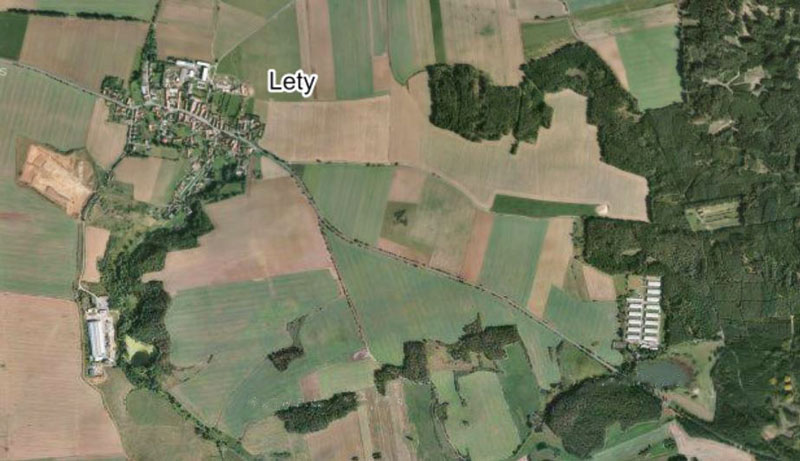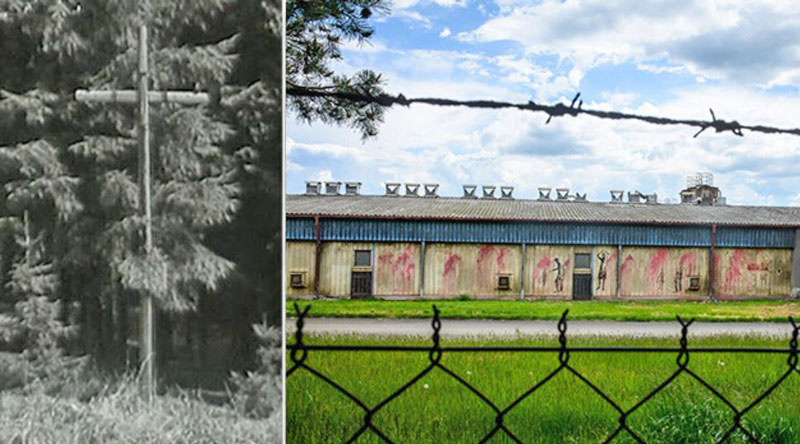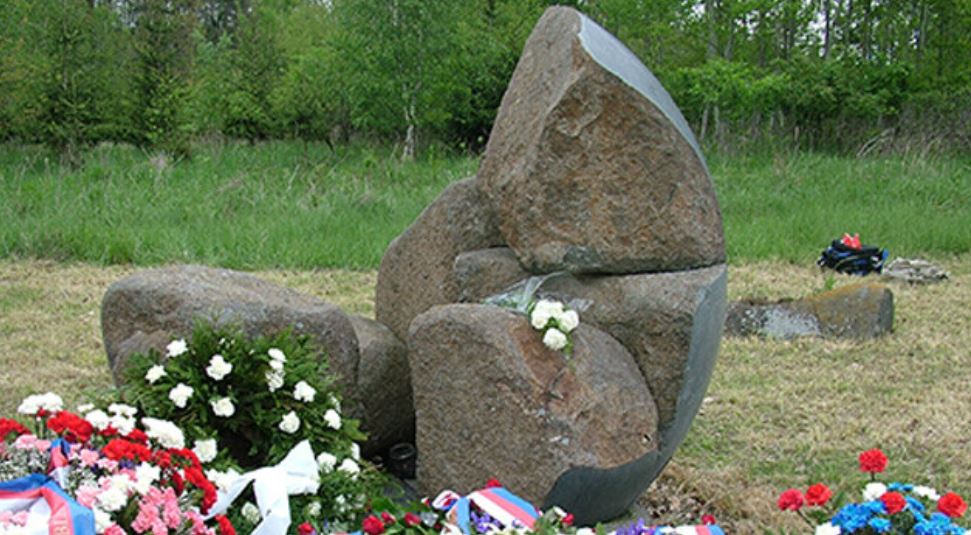The Pig Farm
Before you read this post you might like to get the necessary background by reading the Roma Internment in World War Two post.
In 1992 an American journalist called Paul Polansky was in the regional Czech town of Trebon researching the 19th century emigration of Czechs to the USA and found that the first Czech to arrive in Cleveland came from Lety u Pisku in Bohemia. A fellow Czech researcher then piped up something along the lines of “Lety, yes there was a Gypsy work camp there but they all died of Typhus”.

Polansky made a trip to Lety and talked to people in the village about it’s history. As it never came up in conversation he asked the mayor specifically about the work camp and was told that although the camp was no longer there it would be easy to find because a pig farm had been built on the site. Returning to Trebon he was told that there were a lot of archived documents relating to Lety and Paul was welcome to apply for permission to read them. And so a story known very well by local people and Czech historians was about to become known by a lot more people.
In 1994 he started reading those documents and in 1998 Paul Polansky published his book called “Black Silence”. It was a very uncomfortable book for me to read and I’m not Czech. Despite the indepth knowledge we have about how things worked at Terezin for the Jewish, I had not previously known of any place in this country where the security and management of a World War Two internment labour camp was entirely Czech.
The Pig Farm is Built
Let’s set the scene. It’s 1972, the Lety concentration camp is long gone and a plain wooden cross in the woods is the only thing suggesting that anything had happened here. To the naked eye it was just a field with some old building foundations. It’s the Communist era and somebody decides that a pig farm is required in this part of the country so where to put it?

The village of Lety u Písku was one of the villages considered for it’s location. This would have brought considerable employment to the area plus there was a plot of land that although not suitable for arable farming because of lime in the ground would be a perfect location for a pig farm. Why there was lime in the ground wasn’t a question that anybody asked.
Building begins in 1972 on that land. It just happened to be the location of the World War Two Roma concentration camp known as Gypsy Camp 1 and lime was in the ground to kill off any of the Typhus bacteria which had killed many people here in 1942/43. But that wasn’t the half of it.
1993
In 1993, around the time that Paul Polansky was just beginning to learn about what had happened here, the Czech Culture Ministry was contacted by a Professor Ctibor Necas who had been studying the history of Czech Roma Holocaust victims for the previous 20 years and he was proposing that the burial grounds of the former internment/labour camp at Lety to be declared a protected cultural heritage memorial which in the case of Lety meant the removal of the pig farm. The story was breaking. Racial profiling of Roma, internment, hard labour camps, murder, Czech oversight and transporting Roma to Auschwitz-Birkenau.
You now have to understand the politics of 1993. The country has just split in the Velvet Divorce and has become the Czech Republic. The economy is taking a real hit and it’s all anybody can focus on plus, by recognising what happened at Lety, the Czechs would also have to face up to their part in it, accept responsibility and compensate the few survivors. In any case, in 1995 the Lety situation came to the attention of President Vaclav Havel.
A Reverent Place – The Memorials

The collage above shows two pictures. Briefly, the picture on the right is taken from the 1990s when pressure was growing to close the pig farm and people spray-painted scenes from the Roma concentration camp on the shed walls.
The cross on the left was placed on the site of the Lety camp mass grave post-war and probably by Lety villagers. After this cross was destroyed, in 1986 a second wooden cross was made by camp survivors Jan and Martin Cermák.
The Czechs have a large memorial in Lidice for their dead from the war. This is because they want to have a memorial against the Germans. But we have no monument to us because we were not killed by the Germans. We were killed by Czechs.
Eduard Cermák, the son of prisoners who survived Lety, in the book Black Silence.
It’s correct that the memorial at Lidice is referenced. You can search this website and only on one other post will you find the phrase “reverent place”. It’s on the Lidice Memorial post. It’s important to understand that it was not just the site where people died which was important. It was creating a reverent place for remembrance, for respecting the dead by telling people how and why it had happened. More Detail.

The wooden cross was eventually replaced by a metal version. In 1995 President Vaclav Havel attended the unveiling of the official monument, a sphere of stone which is broken and it’s parts scattered. To paraphrase the words of the designer Zdenek Hula, his inspiration was that “society is a whole and complete so when you break off parts of society you are diminishing that society”. The official memorial day is May 13th.
Fight to the End
The first thought of buying the site and demolishing the pig farm was in 1993. In 1998 the pig farm was commercially valued at 5 million Euros. The Czech state finally bought the site in 2017 for 17 million Euros and it was formally handed over to the Museum of Romani Culture in April 2018. A month before the handover, the mass grave memorial had a “pig’s head” placed on it. The man arrested in May of the same year claimed there was no racist subtext for his action.
Further allocated costs included 4.5 million Euros for the demolition. There was 1.5 million Euros for an architectural survey which established the location of the original camp buildings and showed numerous personal objects associated with the camp. Finally, 12 million Euros for a remembrance site and educational facility.
Paul Polansky died in March 2021 aged 79. The Pig Farm was demolished in July 2022.
Something Related or a Few Minutes Away
History/WW2 – Protectorate of Bohemia and Moravia
